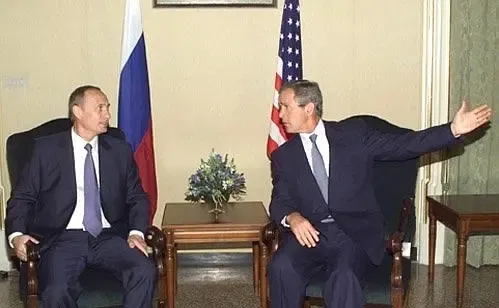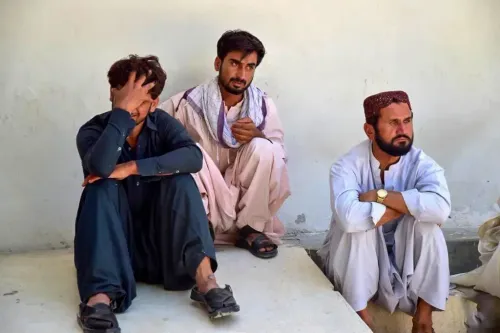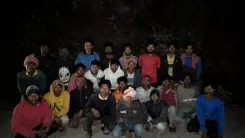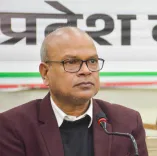How Did the Indian Community Celebrate 150 Years of Vande Mataram in Shanghai?
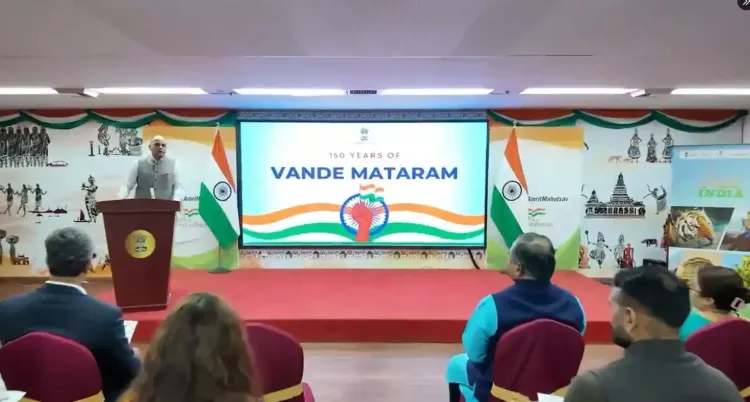
Synopsis
Key Takeaways
- Vande Mataram symbolizes India's freedom struggle.
- The song was published in Bangadarshan in 1875.
- Pratik Mathur highlighted its importance during the Shanghai celebration.
- PM Modi underscored its role in India's awakening.
- Shanghai has historical ties to India's freedom movement.
Beijing, Nov 7 (NationPress) Members of the Indian community gathered to celebrate 150 years of the national anthem Vande Mataram in Shanghai, China on Friday. The event commenced with a speech by Pratik Mathur, the Indian Consul General in Shanghai, who emphasized the significance of Vande Mataram in energizing India’s freedom movement.
On social media platform X, the Indian Consulate General in Shanghai shared moments from the celebration, stating, "The resonance of Vande Mataram in China. Celebrating 150 years of Vande Mataram in Shanghai - honoring the anthem that inspired a nation and remains a unifying force today.” The festivities began with a passionate speech by CG Pratik Mathur, who elaborated on how Vande Mataram played a pivotal role in India's struggle for freedom. Community members filled the Consulate auditorium, singing Vande Mataram in unison, celebrating a century and a half of the song that symbolized India's fight for independence.
Shanghai holds a notable place in India's freedom history: it served as a covert base for Ghadar revolutionaries who hatched plans for independence from these shores. The city was also visited by Gurudev Rabindranath Tagore in 1924 and 1929, promoting Asian unity. From the whispers of revolution to a proud collective chorus today – the spirit continues! Jai Hind!
Earlier in the day, Prime Minister Narendra Modi launched the year-long celebrations for the 150th anniversary of the national song at the Indira Gandhi Indoor Stadium in New Delhi, noting that during the period of subjugation, Vande Mataram emerged as the voice of India's resurgence.
During his address, PM Modi remarked, “Throughout the timeless journey of humanity, we have drawn insights and refined the principles of our civilization. Our ancestors, sages, and enlightened beings bestowed upon us a unique cultural identity.”
PM Modi continued, “In the era of oppression, Vande Mataram became the voice of India’s awakening—a proclamation that the shackles binding Maa Bharati would be shattered by her own children, who would then shape their destiny. Vande Mataram has always remained pertinent and achieved timelessness. The opening line, ‘Sujalam suphalam, malayaja shitalam, shasyashyamalam, Mataram!’ expresses our reverence for our land, rich in natural beauty and prosperity. This represents India's millennia-old identity, a land that has consistently held the potential for greatness.”
“In 1875, Bankim Chandra Chatterjee introduced Vande Mataram in 'Bangadarshan'; some perceived it merely as a song. However, it gradually evolved into the collective voice of India’s awakening, the unified call of millions echoing the revolutionary spirit and the sentiments of every Indian,” PM Modi added.
He further stated, “Even in dire circumstances—amidst pain, destruction, and despair, Bankim Babu envisioned a flourishing India. He firmly believed that regardless of the challenges, India could reclaim its former glory. This is why he invoked the call of Vande Mataram.”
According to a release from the Prime Minister’s Office (PMO), the year 2025 signifies the 150th anniversary of Vande Mataram.
This national anthem, penned by Bankim Chandra Chatterjee during the auspicious day of Akshaya Navami on November 7, 1875, first debuted in the literary magazine 'Bangadarshan' as part of his novel 'Anandamath'.
The song venerates the motherland as the embodiment of strength, abundance, and divinity, articulating India's essence of unity and respect. Over time, it has become a lasting emblem of love for the nation.


